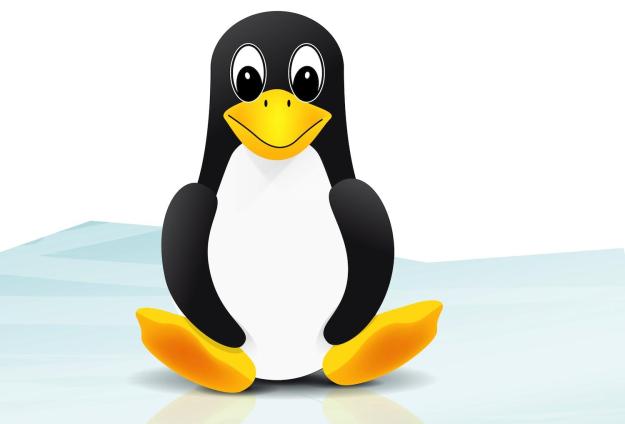
Making a list of the best Linux software is a tough task. Hell, you could fill an entire book just by listing the various distros and desktop environments, let alone making a list of the best software for each one. So while this is by no means a comprehensive list, we did our best to include a wide variety of programs that the average user will find helpful. Below, you’ll find a hodgepodge of different software – mostly stuff for KDE and GNOME, but also a good number of programs that work in any desktop environment. So no matter what flavor of Linux you prefer, there’s something here for everyone.
Security

AVG: A powerful antivirus suite that regularly makes our “best of” lists for it’s ease of use, advanced features, and nonexistent pricetag.
Avast: A similar level of protection to AVG but with a few more features and a slightly more complicated interface. Choosing an antivirus program is largely dependent on your own personal preferences, but for what it’s worth, this one is our favorite.
Firestarter: An open-source graphical firewall for Linux that combines powerful protection against network-based attacks, but with a clean and simple interface.
Crashplan: Available for a variety of different flavors of Linux, Crashplan is a free backup solution that’s lightweight and easy to set up.
GUFW: Much like Firestarter, GUFW provides a graphical user interface to the UFW, which is otherwise controlled using command-line prompts.
Categories
Next Page: Creativity
Creativity

Inkscape: A free and open source vector graphics program that’s extremely powerful. It’s built on the same engine as GIMP and has an incredibly active user community. If you ever run into problems or can’t figure something out, just head on over to the forums for quick help.
GIMP: Short for GNU Image Manipulation Program, GIMP is a free and open-source image editor that works similarly to Adobe Photoshop. The interface is a bit different, and it lacks some of the more specialized features that Photoshop has, but most users will find its features more than adequate. It supports layered editing and it’s regularly updated to provide users with the most cutting edge tools.
Blender: In addition to being one of the most advanced 3D modeling and animation programs out there, Blender is completely free. It’s got a bit of a steep learning curve, but it also boasts an extremely active user community that you can consult if you ever run into problems.
Pitivi: This program is a simple non-linear video editing program with an exquisite user interface. Even if you’ve never edited a video before, chances are good that you’ll be able to pick up Pitivi pretty quickly.
Scribus: For any Linux user in need of fantasic, full-featured publishing software, look no futher than Scribus. It’s totally free and open-source but boasts almost all the same features that you’ll find in MS Publisher or comparable software.
Categories
Next Page: Audio / Video
Audio/Video

XBMC: If you ever use your computer as a home theater PC, XBMC is a must-have. Of all the Universal Plug and Play clients out there, this one takes the cake for it’s ease of use, rock-solid reliability, and advanced features.
Tomahawk: If you’re a voracious consumer of music and you find yourself constantly switching between your local library and dozens of online streaming sources, then Tomahawk is just what you need. The program essentially unifies all of your music into one source, no matter where it’s located. Even if your favorite service isn’t supported, you can create a custom “resolver” for it and start listening in just a few minutes.
Banshee: Looking for an iTunes-like music player for your Linux desktop? Get Banshee. The UI layout will look extremely familiar to anyone who’s used iTunes before, which makes it a great choice for anyone who’s just switched to Linux from OS X.
digiKam: DigiKam is an advanced digital photo manager for KDE that makes importing and organizing your photos damn near effortless. It’s also got a wicked image editor that makes it really easy to do stuff like color correction and noise reduction right after you upload your photos.
SMplayer: SMPlayer is a robust open-source video player that can play virtually all A/V formats. It doesn’t need any external codecs, and it can also be used to search, play, and download YouTube videos.
Transmission: BitTorrent isn’t just for downloading stuff illegally – it’s a powerful filesharing protocol that has plenty of legal uses as well. You should always have a good BitTorrent client, and Transmission is one of the best ones out there.
Categories
- Security
- Creativity
- Audio / Video
- Office / Communication
- Utilities / Other
Next Page: Office / Communication
Office/Communication

Open Office: You’ve probably heard of this one before. Open Office is one of the most popular and full-featured open-source office suites, and its reputation is deserved. It can be used for word processing, spreadsheets, presentations, databases, and more.
Okular: PDFs are everywhere and there’s going to be a point where you need to open one. Since there isn’t a distro that natively has the ability to open PDFs, you’ll need to install some sort of PDF viewer to open these kinds of files. Okular is our favorite.
Gnumeric: Spreadsheets done the Linux way. Gnumeric can even read files created with other spreadsheet programs, so if you’ve got old files you need to open from other programs, don’t sweat it. It also has a customizable interface that makes it really easy to transition from other spreadsheet software you previously used.
Gedit: Gedit is a fantastic text editor for the GNOME desktop environment. It has plenty of advanced options and features, but even if it’s missing something you’d like, it also includes a flexible plugin system which can be used to dynamically add new features (of which there are many).
Pyroom: Feature-packed word processors are overrated. If all you need is a program that provides a visually uncluttered space for you to put words on the page, Pyroom is just what you’re looking for.
Thunderbird. Forget Linux, Thunderbird is one of the best email clients on any operating system. Mozilla is all about making stuff that’s free and open source, so you can get Thunderbird no matter what OS you prefer.
Pidgin: Pidgin is a multi-protocol instant messaging program that can unify all your contacts from services like AIM, MSN Messenger, Yahoo, GTalk, and give you one place to communicate with all of your friends, family, and coworkers.
Categories
- Security
- Creativity
- Audio / Video
- Office / Communication
- Utilities / Other
Next Pzge: Utilities / Other
Utilities/Other

Shutter: While plenty of Linux distros can snag a screenshot with a quick keyboard shortcut, they generally lack stuff like specific area capture and advanced editing options. Fill in the feature gaps with Shutter. This program can do pretty much anything you can imagine a screen capture utility can do.
Autokey: Autokey is a no-nonsense text expander for Linux that’ll save you time by eliminating the need to fully write out certain words and phrases.
Brasero: Want to burn a CD or DVD? You’ll need a utility like Brasero to do it.
LastPass: LastPass is a password manager that saves you from the hassle of remembering a zillion different passwords. It can auto-fill fields for you and can also be used to generate highly secure passwords when you create new accounts.
Ark: Ark is an archive utility for the KDE environment that can be used to browse, extract, create, and modify archives in most common formats.
Wine: Although it’s increasingly easy to use free and open-source sofware for just about anything, there’s a good chance that you’ll need to run a Windows program on your Linux PC at some point. Wine lets you do that.
VirtualBox: VirtualBox is a general-purpose virtualizer for x86 hardware. It gives you the ability to run multiple virtual environments simultaneously so you can install Mac and Windows programs, or even other Linux distros you want to test out.
Redshift: Does your uber-bright computer display make your eyes sore? Find it hard to fall asleep after sustained computer use? Try Redshift out. By changing the hue of your display and lessening the amount of blue light hitting your eyeballs, Redshift helps reduce strain on your eyes and allows your body to produce the proper amounts of melatonin when it gets dark.
Gmount ISO: A simple, lightweight program for mounting disk image files in the GNOME desktop environment.
File Roller: File Roller is an archive utility for GNOME that lets you extract, create, or browse archived files.
Docky: Looking to spice up your dull dock? Docky is a fully-customizable dock application that makes opening your oft-used programs and managing windows easier and more efficient.
Categories
- Security
- Creativity
- Audio / Video
- Office / Communication
- Utilities / Other
Since each flavor of Linux has it’s own set of custom programs, we know this list is anything but complete. If we left out any of your favorite Linux programs, be sure to share in the comments below.



